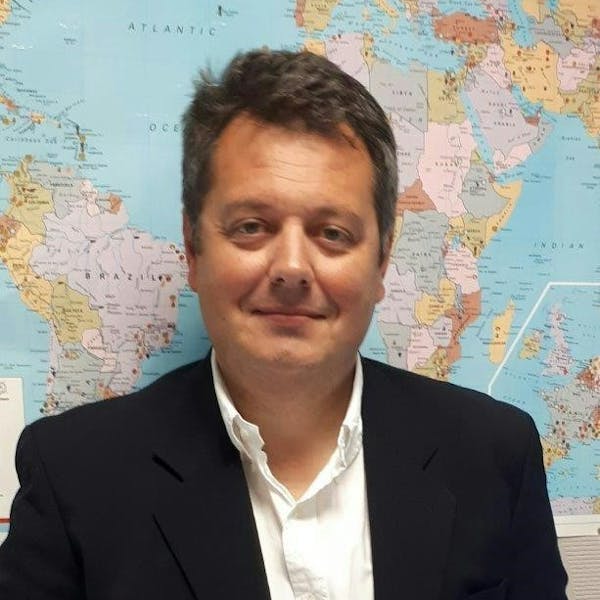

Article shared with the kind authorization of News Tank Agro.
Would you introduce Acadian Plant Health?
Acadian is a family-owned Canadian group with headquarters in Nova Scotia, on the eastern shore of Canada. Acadian is dedicated to seaweed-based with a focus on biostimulants. The Group has over 420 employees worldwide, which makes us one of the bigger companies in the sector. Acadian Plant Health has a global presence with regional marketing, development and commercial organizations in North America, Central and South America and EMEA in which France is situated. We also have an APAC organization where we are notably operating in India and China.
The strategy is to build partnerships at national and regional levels as well as globally when possible, like the one recently announced with BASF Agriculture. My arrival several years ago at Acadian Plant Health corresponds to a new function and contributes to this vision.
When did Acadian Plant Health begin operations in France?
France is a strategic country for Acadian. We structured ourselves at a European level with an EMEA team established four to five years ago with Enrico Boccaletti, based in Italy, leading the EMEA team as Commercial Vice President of the EMEA region.
In terms of innovation, we became more international and developed our Technology Hub based in Canada and, in 2021, we also established a new laboratory in Malvern, UK. This laboratory works in particular on new formulations. It is important to keep our leadership by innovating within the growing biostimulant market.
What does the biostimulant market look like worldwide?
It is a market that has grown significantly. It represents €3.5 bn worldwide. Independent studies and market surveys estimate that this market may double around 2030. The market is still fragmented and consists of very different types of solutions. The “Seaweeds category” represents a third of this market and it is not by chance as seaweed-based solutions have been able to demonstrate their technical values over the last decades.
"Independent studies and market surveys estimate that [the biostimulants] market may double [by] 2030."

What does it mean to work with seaweed regarding sourcing and R&D?
Ascophyllum nodosum grows in the cold waters of the north Atlantic shores. This brown seaweed has developed in a very particular ecosystem: with tides, the seaweed is immersed twice a day and is also above sea level twice a day. You can easily imagine what this represents in term of stress conditions for a vegetal organism. Ascophyllum has therefore developed a unique composition. The Acadian leadership is illustrated by the number of scientific papers and publications demonstrating the agronomical effects as well as the composition of the solutions.
To briefly elaborate on the composition, our seaweed solutions are rich in oligossacharides, contain betaines, mannitol, alginic acids and fucoidans.
Some of the molecules mentioned have antioxidant effects. When a plant is facing stress, there is often an “oxidative burst” that impact the cells. Our biostimulants have anti-stress effects that are well documented.
After having identified this unique composition, the challenge is to process the seaweed, to transform it accurately and our extraction process is what differentiates us the most. We use an alkaline extraction method, at regular pressure. Our industrial extraction process is a pillar of our expertise and the quality we deliver is well known by our commercial partners.
What is your annual volume? Do you have issues with harvest?
As a privately-held company, we don’t communicate figures, but according to our information, we are a leader from that standpoint as well, which means it is a big responsibility to manage such a natural resource.
The company has strongly defended the effect of “pure” algae extracts in order to highlight the effectiveness of our compounds derived from Ascophyllum and, as just mentioned, processed with the greatest attention. At Acadian, Ascophyllum is our most precious resource.
We are increasingly promoting the sustainability of our products to our partners and therefore it goes without saying that we have an unfailing desire upstream to demonstrate that we harvest, with our suppliers, with the lowest possible environmental impact. We have a group of algae specialists, scientists in fact, to not only ensure that our harvest is regenerative, but also that we do not have a negative effect on the ecosystem where the Ascophyllum grows.
Our resource is doing very well in our harvesting area of Canada. However, we must always remain vigilant and our team of specialists is, I can tell you, ensuring this is the case.
In what directions are you innovating?
Our innovation allows us to gain valuable experience from our legacy products and refine our technology to create new products. For example, we want to move towards new crops, new sectors with our already well-known products. And then we have, I would say unfortunately, the increase in abiotic stress, which, more than ever, impacts practically all European crops.
We therefore strive to provide new optimized solutions to better manage plant growth and development, whether with hydric, thermal or other stresses. Our products have significant potential to reduce stress impacts. To take another example, in Spain, we are testing in saline conditions, with soil that challenges crop growth. Moreover, we also have scientific evidence demonstrating that some of our solutions can help improve soil health.
On which crops do biostimulants work best?
That is a very good question, and, in fact, always a good question for biostimulants as well as for other agricultural inputs. If we look in the rearview mirror, what we can say is that there has been greater “permeability” of these products on specialty crops. For example, Italy and Spain were and are major users of biostimulants.
Today we see an increasingly balanced use in Europe, including France, between row crops and horticulture.
There are biostimulants that work on virtually all crops but especially for different effects. In fact, the subject is also, and perhaps above all, to demonstrate to which specific problem a biostimulant brings its effectiveness.
At Acadian, we are developing solutions for row crops as well as speciality crops and that means showing that “it works” on these very diverse species, and once again, for the most precise objective possible and measurable benefits.
How do you see the French biostimulant market evolving in the coming years?
We see leading ag input suppliers taking an interest in these markets, as well as French agricultural distribution companies structuring and organizing themselves to better bring these solutions to farmers. I believe that these are strong signals of actual dynamic. This dynamic can already be seen with annual average growth rates being between 12% and 14% at the European level in recent years, and I believe that France is at this same level. This growth should remain at double-digit rates in the coming years.
Note that Europe represents around a third of global use of biostimulants. The challenge is still to facilitate better adoption on row crops.
Growth clearly also comes from historical seaweed-based biostimulant products and as an example, Ascophyllum represents almost 50% of the seaweed-based biostimulant market. This market will inevitably evolve. A challenge is still increasing adoption on row crops. Certainly, there is still a lot to do on specialty crops with biostimulants, but climate volatility, as I like to call it, is not going to stop and can impact all crops in theory.
In terms of innovation and regenerative agriculture, we work a lot on the benefits that our products can provide with respect to soil health. We have scientific data that shows a stimulation of the soil microbiome with some of our solutions. This is one of the reasons why we position ourselves as a contributor to regenerative agriculture.
Are there still discussions to better control or set a framework for biostimulants?
Perhaps it is rather a matter of better defining our biostimulants, giving them clear regulatory status and having them well recognized. This is also the objective of the European Biostimulant Industry Consortium (EBIC), the European interprofessional association of which we are a part. At the French level, we are also a member of Unifa (Union of the Fertilization Industry).
The European Union's FPR regulation, which came into force in 2022 and that allows European authorisation of biostimulants. EBIC helped a lot on this achievement. It is good to know that to secure European approvals for our solutions, our products have been independently evaluated and that the recommendations and claims that we can then indicate on the labels have been validated by the regulator. Ultimately, this is an additional guarantee of our products for our customers and users.
To come back to your “framework” terminology, the European framework now exists, at the regulatory level at least, and this should gradually help biostimulants in general.
